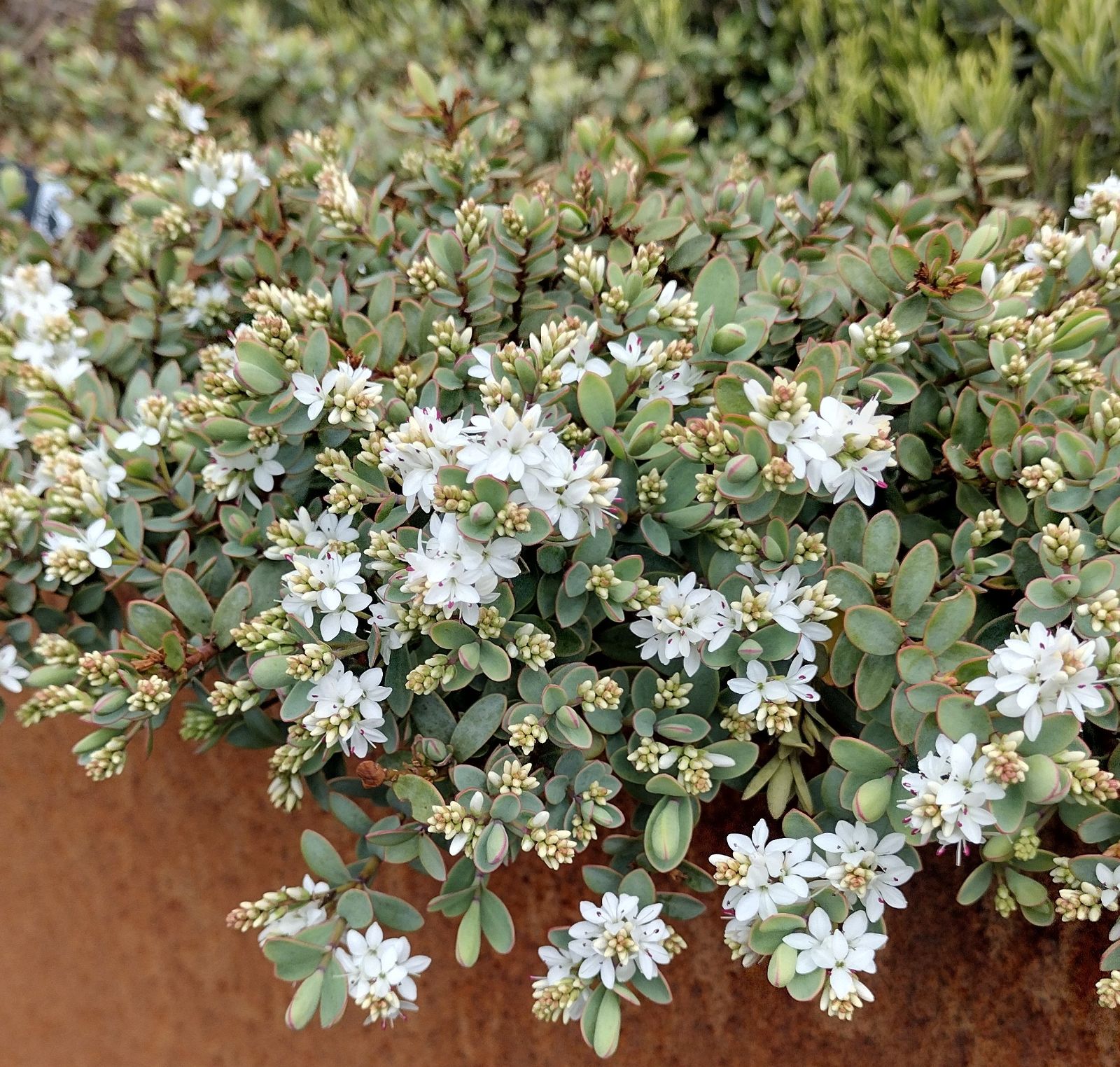Hebe pinguifolia
Credits
Article from Bean's Trees and Shrubs Hardy in the British Isles
Recommended citation
'Hebe pinguifolia' from the website Trees and Shrubs Online (treesandshrubsonline.
Genus
Synonyms
- Veronica pinguifolia Hook f.
Infraspecifics
Other taxa in genus
- Hebe amplexicaulis
- Hebe anomala
- Hebe armstrongii
- Hebe brachysiphon
- Hebe buchananii
- Hebe buxifolia
- Hebe canterburiensis
- Hebe carnosula
- Hebe chathamica
- Hebe colensoi
- Hebe cupressoides
- Hebe decumbens
- Hebe dieffenbachii
- Hebe diosmifolia
- Hebe elliptica
- Hebe epacridea
- Hebe × franciscana
- Hebe gibbsii
- Hebe gigantea
- Hebe glaucophylla
- Hebe gracillima
- Hebe hectoris
- Hebe hulkeana
- Hebe leiophylla
- Hebe ligustrifolia
- Hebe loganioides
- Hebe lycopodioides
- Hebe macrantha
- Hebe macrocarpa
- Hebe matthewsii
- Hebe ochracea
- Hebe parviflora
- Hebe pimeleoides
- Hebe propinqua
- Hebe rakaiensis
- Hebe recurva
- Hebe rigidula
- Hebe salicifolia
- Hebe speciosa
- Hebe stricta
- Hebe tetrasticha
A shrub 1 to 3 ft high, branches at first erect, often ultimately prostrate; minutely downy when young, stained with purple beneath each pair of leaves. Leaves closely superposed in four rows, obovate, blunt at the apex, tapered to a broad stalkless base, 1⁄2 to 3⁄4 in. long, 1⁄4 to 3⁄8 in. wide, quite entire, concave or scoop-shaped, dull glaucous green. Flowers white, 1⁄4 to 1⁄3 in. diameter, stalkless, crowded on spikes 3⁄4 to 1 in. long which are borne in the terminal leaf-axils, rachis of spike downy. Calyx with four minutely downy, oblong, blunt divisions. Corolla-tube scarcely as long as the calyx; ovary and style downy. Seed-vessel oblong or obovate, rounded at the apex, downy, nearly twice as long as the calyx. Bot. Mag., t. 6147 and 6587.
Native of the South Island of New Zealand; introduced about 1868. It is killed by very severe frosts, but survives most of the winters in the South of England, flowering about midsummer, although not abundantly nor regularly. It is very similar to, and much confused with H. carnosula, under which name it was figured in the Bot. Mag., t. 6587. The differences between the two are in the often comparatively broader leaves of H. carnosula, its glabrous ovary and style, and its ovate, pointed, glabrous seed-vessel.
From the Supplement (Vol. V)
cv. ‘Pagei’. – The reference to Mr Souster’s article was given wrongly on page 342 and should be Vol. 83, pp. 301–4 (1958).
† cv. ‘Sutherlandii’. – Widely grown in New Zealand, this cultivar seems to be no improvement on ‘Pagei’.
† H. brockiei Simpson & J. Thomson – A probable natural hybrid between H. pinguifolia and H. subalpina, known only from one locality in South Island, but plentiful there; described in 1942. It is a low shrub, its leaves bright green with a yellowish edge, but resembling those of H. pinguifolia in form. Flowers white, in racemes 7⁄8 to 15⁄8 in. long, in early summer.
'Pagei'
A low shrub making a clump about 1 ft high and 2 to 3 ft across. Young stems plum-coloured. Leaves very glaucous, oblong-elliptic or slightly obovate, {1/2} in. or slightly more long. Flowers white, in short clusters, borne in May or even earlier in a mild spring and often again in late summer. A.M. 1958. For a note on the history and botany of this cultivar by J. Souster, see Journ. R.H.S., Vol. 83 (1958), pp. 301–4. It is very beautiful when well grown and needs a sunny position and a well-drained soil.

